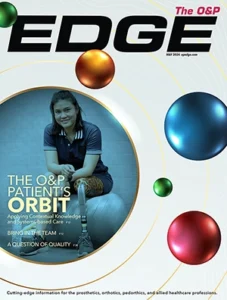
There were two important developments in June that advanced O&P policy, one regulatory and one legislative. On June 30, the Centers for Medicare & Medicaid Services (CMS) released the 2024 Home Health Prospective Payment proposed rule that contained an important orthotics section defining this benefit. The details of the proposal follow, and public comments are being collected by CMS. On June 23, the Medicare Orthotics and Prosthetics Patient-Centered Care Act was introduced as H.R. 4315 in the US House of Representatives. The bipartisan legislation contains three important provisions that will advance O&P care.
Support authors and subscribe to content
This is premium stuff. Subscribe to read the entire article.




